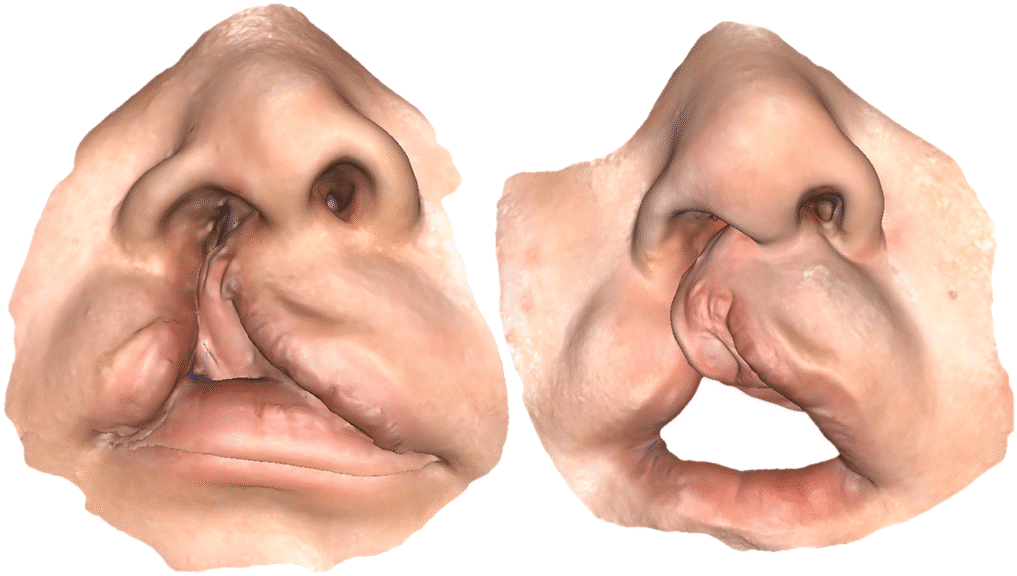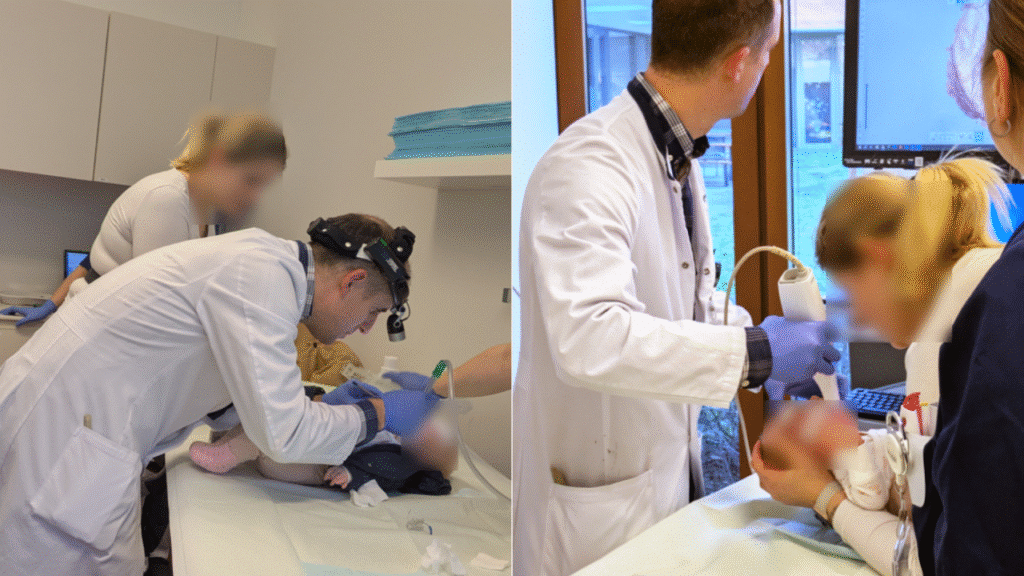The Smile That Starts It All
In the heart of Switzerland, at Basel Children’s Hospital, a team of doctors is helping make that possible. Among the cries and heartbeats of newborns, they are also witnessing something extraordinary: the transformation of fear into hope.
And it all begins with one small scan. Babies born with cleft lip or palate begin life with a challenge, one that demands delicate, precise medical attention from the very start. But treating these fragile patients isn’t just about surgical skill. It starts far earlier, with something as seemingly simple, and dangerous, as taking an impression of their tiny mouths.
“Taking a traditional impression in a newborn is risky. You need an entire backup team: anesthesiologist, airway specialists, everything, because one wrong move can stop the baby from breathing,” says Dr. Benito Benitez, a neural maxillofacial surgeon with specialization in cleft and craniofacial surgery. This is the kind of situation that forces innovation, not in theory, but in the hands of people trying to help a baby live.
When a Scan Becomes a Start

Facing the clinical problem of safely capturing the unique anatomy of babies born with cleft deformities, Dr. Benitez and his colleagues turned to digital technology. The ability to quickly and precisely obtain 3D images from an intraoral scanner has opened new possibilities. “This technology gave us a solution to a problem we faced in our daily practice,” he explained.
The digital workflow not only minimizes the risks associated with conventional impressions but also streamlines the process, ensuring better outcomes for these vulnerable patients.


This isn’t about replacing human care. It’s about amplifying it. Digital scans empower medical teams to work faster, more safely, and more precisely. In places where time matters and safety is everything, the scanner becomes more than a device. It becomes the first step in giving a child their smile. “You stop holding your breath. You stop worrying about what could go wrong.
You just look at the screen and know that you’re going to be able to help this child,” says Dr. Benitez.

Building a Better Future
Dr. Benitez also shared insights into future directions in his field. Research groups in Basel are investigating whether digital impression data could eventually allow clinicians to capture a simple intraoral image and then compute the complete 3D morphology of the patient’s mouth. “This is the direction we should be heading in,” he remarked, emphasizing the potential for future innovations that could further enhance patient care.
This isn’t a story about advanced technology. It’s a story about choosing a safer way, when it matters most. And in doing so, giving children the freedom to begin their lives not in fear, but in comfort, care, and one day, a smile. Because every first smile deserves to be safe.
*Reference
A Point-of-Care Digital Workflow for 3D Printed Passive Presurgical Orthopedic Plates in Cleft Care., Benito K., et al (2022)



